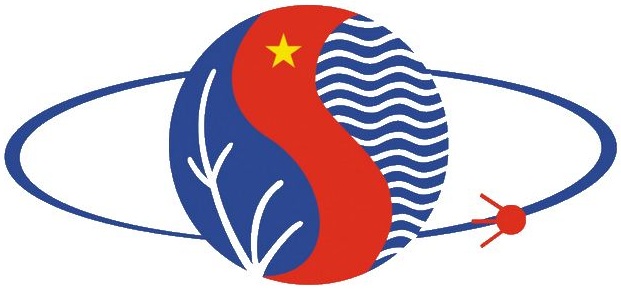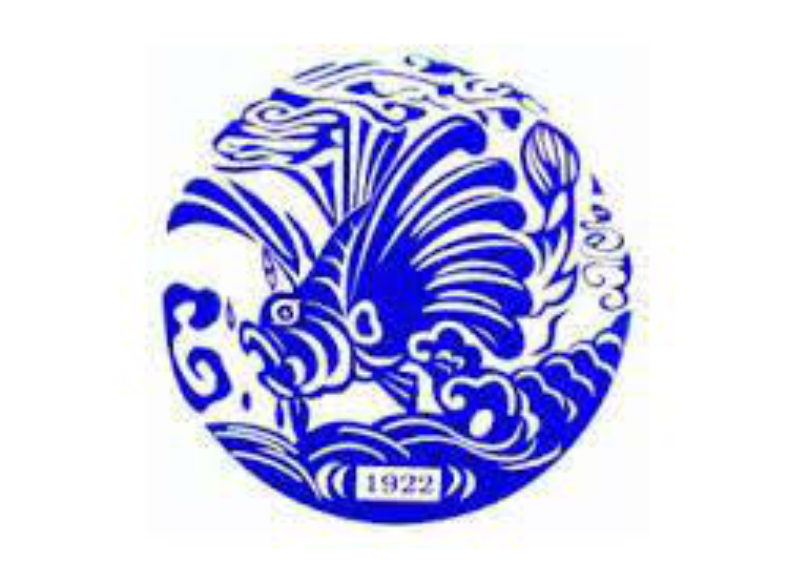Diversity of dinoflagellates in the Northern Vietnam coastal waters
Author affiliations
DOI:
https://doi.org/10.15625/1859-3097/20912Keywords:
dinoflagellate, phytoplankton, northern Vietnam, coastal waters, diversityAbstract
Phytoplankton were investigated within the framework of the Vietnam’s coastal water quality monitoring program. The present study analyzed phytoplankton samples collected in the northern Vietnam coastal waters (Tra Co, Cua Luc, Do Son, Ba Lat, Sam Son and Cua Lo stations) from 2019 to 2022 to characterize diversity and abundance of dinoflagellate communities. A total of 129 species belonging to 35 genera, 23 families, 8 orders, and 2 classes of dinoflagellates were recorded in this study area. The diversity of dinoflagellates varied depending on the sampling locations and times. Tripos furca was recorded as the most dominant and common species (accounting for approx. 93% of the samples) in the dinoflagellate communities throughout the year. The density of dinoflagellates and Tripos furca varied strongly by sampling locations, times, and tides. This species seems preferable and grows with high density in the study area from June to September. Among water environment factors, salinity had the strongest correlation with the density of Tripos furca depending on the sampling locations and the tides.
Downloads
References
[1] E. Balech, “The Biology of Dinoflagellates, Botanical Monographs, Vol. 21,” Phycologia, vol. 27, no. 3, pp. 435–436, 1988.
[2] Q. T. Hoang, “Plankton in Nha Trang Bay. 2. Dinoflagellates,” Annales de la Faculté des Sciences de Saigon, vol. 2, pp. 129–176, 1963.
[3] A. Shirota, The Plankton of South Viet-Nam: Fresh Water and Marine Plankton, Overseas Technical Cooperation Agency, 1966. [Online]. Available: https://openjica-report.jica.go.jp/pdf/10424372_01.pdf
[4] L. Nguyen-Ngoc, T. Ho-Van, and J. Larsen, “A taxonomic account of Ceratium (Dinoflagellates) in Vietnamese waters,” The Thailand Natural History Museum Journal, vol. 6, no. 1, pp. 25–59, 2012.
[5] J. Larsen and N. L. Nguyen, Potentially toxic microalgae of Vietnamese waters, Opera Botanica, vol. 140, Council for Nordic Publications in Botany, Copenhagen, Denmark, 2004, pp. 5–216.
[6] L. Phan-Tan, L. Nguyen-Ngoc, and H. Doan-Nhu, “Species diversity of sections conica and tabulata in the genus Protoperidinium (Dinophyceae) from tropical waters of the South China Sea,” Nova Hedwigia, vol. 103, no. 3–4, pp. 515–545, 2016.
[7] L. Phan-Tan, L. Nguyen-Ngoc, H. Doan-Nhu, R. Raine, and J. Larsen, “Species diversity of Protoperidinium sect. Oceanica (Dinophyceae, Peridiniales) in Vietnamese waters, with description of the new species P. larsenii sp. nov.,” Nordic Journal of Botany, vol. 35, no. 2, pp. 129–146, 2017.
[8] L. T. Phan, M. Krakhmalnyi, H. T. T. Le, V. T. L. Tran, H. T. M. Tran, D. T. Ngoc Huynh, B. Zarei Darki, and A. Krakhmalnyi, “A new species and a new combination in Protoperidinium sect. Oceanica (Peridiniales, Dinophyceae) from Vietnamese waters,” Nordic Journal of Botany, vol. 2024, no. 5, p. e04206, 2024.
[9] P. T. Luom, “A new record of rare dinoflagellate species Protoperidinium carum (Abé, 1981) Balech, 1994 for Vietnamese waters and Southeast Asia region,” Vietnam Journal of Marine Science and Technology, vol. 20, no. 4, pp. 447–455, 2020.
[10] L. Nguyen-Ngoc, H. Doan-Nhu, J. Larsen, L. Phan-Tan, X. V. Nguyen, N. Lundholm, T. V. Chu, and D. N. Huynh-Thi, “Morphological and genetic analyses of Ostreopsis (Dinophyceae, Gonyaulacales, Ostreopsidaceae) species from Vietnamese waters with a re-description of the type species, O. siamensis,” Journal of Phycology, vol. 57, no. 3, pp. 1059–1083, 2021.
[11] L. Nguyen-Ngoc, H. Doan-Nhu, L. Phan-Tan, D. N. Huynh-Thi, V. Nguyen-Tam, A. H. Pham, H. M. Tran-Thi, V. L. Tran-Thi, and P. Tester, “Seasonal occurrence of the potentially toxic benthic armoured dinoflagellates in Nha Trang Bay, South Central Coast of Viet Nam,” Regional Studies in Marine Science, vol. 55, p. 102627, 2022.
[12] N. H. Minh, V. M. Hao, and N. V. Quang, “Phytoplankton in the western area of Tonkin Gulf and adjacent areas,” Journal of Marine Science and Technology, vol. 11, no. 4, pp. 57–73, 2011. [in Vietnamese].
[13] C. Van Thuoc, S. Heo, and C. I. Choi, “Phytoplankton in the Surrounding Waters of Cat Ba National Park and Halong Bay, Vietnam,” Ecosystem and Biodiversity of Cat Ba National and Ha Long Bay, Vietnam, Annals of Nature Conservation, vol. 12, pp. 239–255, 1997.
[14] C. V. Thuoc and N. T. M. Huyen, “Biodiversity of microalgae in the northern coastal waters of Vietnam,” in Proceedings of the Vietnam-Italy Joint Scientific Conference on Biodiversity Conservation in the Coastal Zone of Vietnam, Hanoi, Vietnam, 2004, pp. 113–131.
[15] C. V. Thuoc, N. T. M. Huyen, P. T. Thu, and L. T. Tung, “Some new data on phytoplankton distribution in the western of Tonkin Gulf,” Journal of Marine Science and Technology, vol. 12, no. 2, pp. 32–46, 2012. [in Vietnamese].
[16] C. V. Thuoc, N. T. M. Huyen, D. V. Nhan, D. T. Nghi, and X. Mari, “Biodiversity of phytoplankton in Ha Long – Bai Tu Long bay, Quang Ninh,” Journal of Marine Science and Technology, vol. 14, no. 3a, pp. 113–124, 2014. [in Vietnamese].
[17] H. T. N. Duyen, T. T. T. Hue, T. T. L. Van, P. T. Luom, N. N. Lam, and D. N. Hai, “Variation of phytoplankton community structure in Quang Ngai coastal waters during 2015–2019,” Vietnam Journal of Marine Science and Technology, vol. 20, no. 4A, pp. 21–33, 2020.
[18] N. D. T. Huynh, L. Nguyen-Ngoc, M. Voss, and H. Doan-Nhu, “Dinoflagellate Tripos furca and Tripos fusus niches in the South China Sea: Maximum entropy assessment of environmental factors,” Regional Studies in Marine Science, vol. 55, p. 102601, 2022.
[19] G. R. Hasle and A. Sournia, Phytoplankton Manual, Monographs on Oceanographic Methodology, vol. 6, UNESCO, Paris, 1978.
[20] Institute of Marine Environment and Resources, Process of Marine Resources and Environment Investigation - Biology and Environmental Chemistry Part, Publishing House for Science and Technology, Hanoi, 2014, 291 p. [in Vietnamese].
[21] B. Reguera, R. Alonso, Á. Moreira, S. Méndez, and M.-Y. Dechraoui-Bottein, Eds., Guide for Designing and Implementing a Plan to Monitor Toxin-Producing Microalgae, 2nd ed., Intergovernmental Oceanographic Commission (IOC) of UNESCO and International Atomic Energy Agency (IAEA), Paris and Vienna, 2016.
[22] F. J. R. Taylor, Dinoflagellates from the International Indian Ocean Expedition: A Report on Material Collected by the R.V. "Anton Bruun" 1963-1964, Bibliotheca Botanica, vol. 132, E. Schweizerbart’sche Verlagsbuchhandlung, Stuttgart, 1976, pp. 1–234.
[23] J. D. Dodge, Atlas of Dinoflagellates: A Scanning Electron Microscope Survey, Farrand Press, London, 1985, pp. 1–119.
[24] C. R. Tomas, Ed., Identifying Marine Phytoplankton, Academic Press, San Diego, CA, 1997, pp. 1–858.
[25] E. Balech, The Genus Alexandrium Halim (Dinoflagellata), Sherkin Island Marine Station, 1995.
[26] T. Omura, M. Iwataki, V. M. Borja, H. Takayama, and Y. Fukuyo, Marine Phytoplankton of the Western Pacific, Kouseisha Kouseikaku Co., Tokyo, Japan, 2012.
[27] R. A. Fensome, F. J. R. Taylor, G. Norris, W. A. S. Sarjeant, D. I. Wharton, and G. L. Williams, “A classification of living and fossil dinoflagellates,” Micropaleontology Special Paper, no. 7, pp. 1–351, American Museum of Natural History, New York, 1993.
[28] F. Gómez, “Reinstatement of the dinoflagellate genus Tripos to replace Neoceratium, marine species of Ceratium (Dinophyceae, Alveolata),” CICIMAR Oceánides, vol. 28, no. 1, pp. 1–22, 2013.
[29] M. D. Guiry and G. M. Guiry, AlgaeBase, University of Galway, 2024. [Online]. Available: https://www.algaebase.org. [accessed March 24, 2024].
[30] V. T. Chu and V. D. Tran, “An overview of current activities relating to phytoplankton monitoring in coastal waters of North Viet Nam,” in The Proceedings of the Workshop on Red Tide Monitoring in Asian Coastal Waters, University of Tokyo, Tokyo, Japan, Mar. 10–12, 2003, pp. 69–73.
[31] N. V. Nguyen, D. D. T. Le Thanh Tung, L. X. Hoa, N. V. Thoa, N. Cong, N. H. M. Thanh, and Y. Fukuyo, “Recent HAB events in Ha Long Bay (Vietnam): Increase in frequency, harmful effects associated with increased eutrophication,” in Proceedings of the 15th International Conference on Harmful Algae (ICHA), 2013.
[32] G. W. Smalley and D. W. Coats, “Ecology of the red-tide dinoflagellate Ceratium furca: distribution, mixotrophy, and grazing impact on ciliate populations of Chesapeake Bay,” Journal of Eukaryotic Microbiology, vol. 49, no. 1, pp. 63–73, 2002.
[33] T. Jephson and P. Carlsson, “Species- and stratification-dependent diel vertical migration behaviour of three dinoflagellate species in a laboratory study,” Journal of Plankton Research, vol. 31, no. 11, pp. 1353–1362, Oct. 2009. DOI: 10.1093/plankt/fbp078.
[34] S. H. Baek, S. Shimode, and T. Kikuchi, “Growth of dinoflagellates, Ceratium furca and Ceratium fusus, in Sagami Bay, Japan: The role of temperature, light intensity, and photoperiod,” Harmful Algae, vol. 7, no. 2, pp. 163–173, 2008.
Downloads
Published
How to Cite
Issue
Section
License
Copyright (c) 2025 Vietnam Academy of Science and Technology

This work is licensed under a Creative Commons Attribution-NonCommercial-NoDerivatives 4.0 International License.








